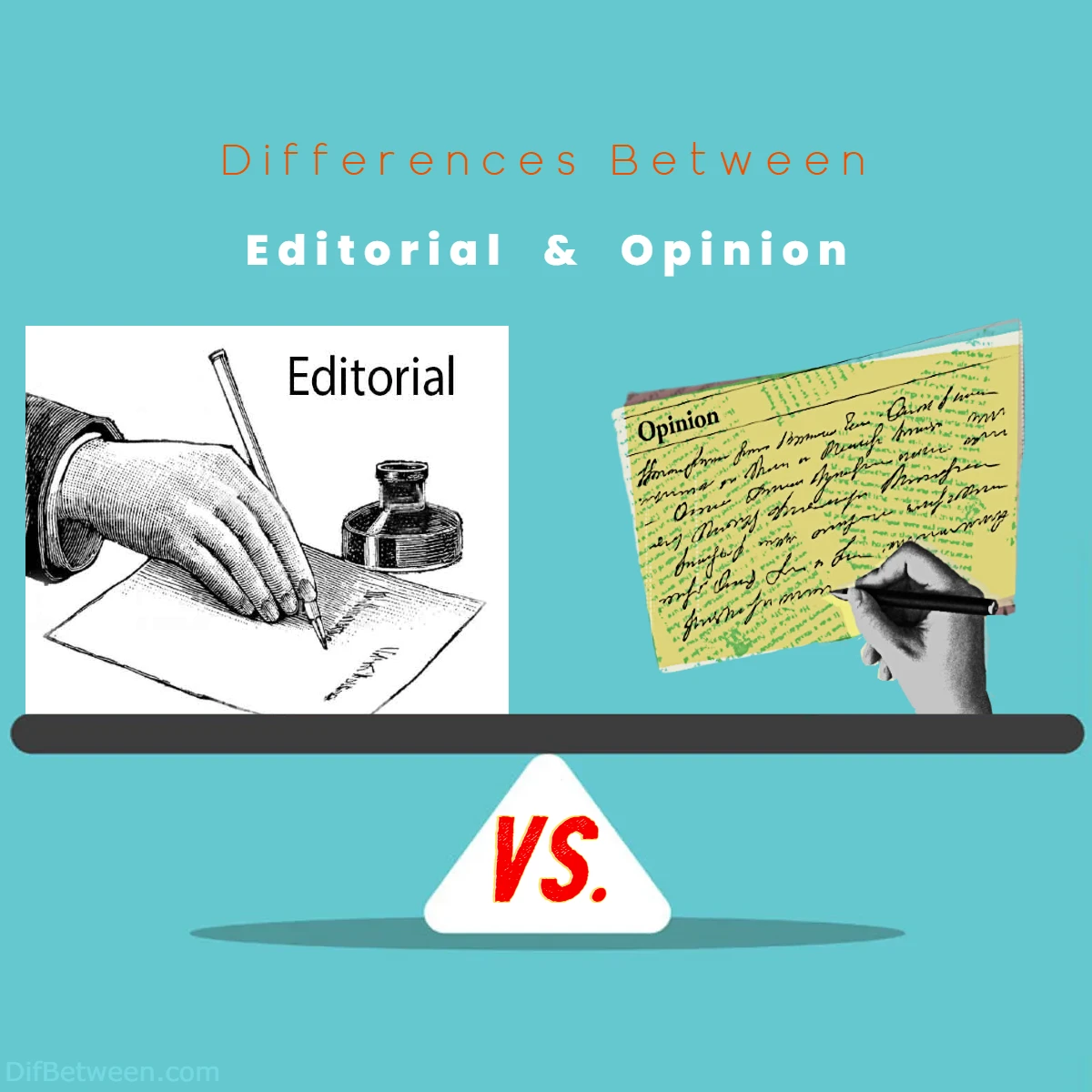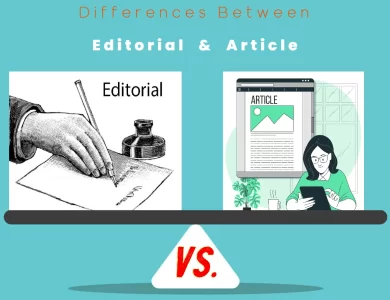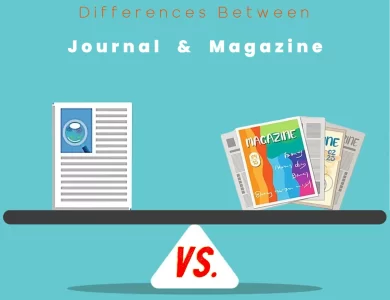
| Aspect | Editorial Pieces | Opinion Pieces |
|---|---|---|
| Authorship | Editorial board or designated group within publication | Individual writer (columnist, expert, contributor) |
| Tone | Objective, authoritative | Subjective, personal, engaging |
| Content | Represents publication’s institutional viewpoint | Expresses individual viewpoint, interpretation |
| Research | Rigorous research, credible sources | May include personal anecdotes, less extensive research |
| Persuasion | Balanced arguments, logical persuasion | Emotional persuasion, aiming to sway opinion |
| Citing Sources | Cite credible sources, focus on verifiable facts | May reference sources, but personal experiences often take precedence |
| Voice | Impersonal, reflects publication’s stance | Personal, reflects writer’s personality and perspective |
| Style | Formal, structured | Creative, may include anecdotes, narrative elements |
| Objective | Presents facts and analyses | Expresses personal beliefs and thoughts |
| Authority | Represents publication’s official stance | Represents writer’s individual viewpoint |
| Purpose | Inform and guide readers on important topics | Influence and engage readers through personal perspective |
| Example | Editorial on climate change policies | Opinion on the impact of climate change on personal life |
| Engagement | Appeals to readers seeking objective insights | Appeals to readers seeking emotional connections and personal insights |
| Critical Role | Provides informed analysis of current events | Offers diverse perspectives and sparks conversations |
| Common Venue | Newspapers, magazines, online news sites | Columns, personal blogs, online platforms |
Picture this: you’re flipping through the crisp pages of a newspaper or scrolling down the vibrant landscape of an online article. Suddenly, you encounter two intriguing terms that pique your curiosity – “editorial” and “opinion.” But wait, what’s the real difference?
Differences Between Editorial and Opinion
The main differences between editorial and opinion pieces lie in their tone, content, and purpose. Editorials, often crafted by an editorial board, maintain an objective and authoritative tone, offering well-researched analyses of current events while representing the publication’s institutional viewpoint. In contrast, opinion pieces, authored by individuals such as columnists or experts, adopt a subjective and personal tone, expressing individual viewpoints and interpretations with the aim of influencing and engaging readers on a more emotional level. So, while editorials provide balanced insights backed by credible sources, opinions infuse the writer’s voice, experiences, and persuasions into the narrative.
Editorial and Opinion: Unraveling the Mystery
Editorial Pieces: The Voice of the Publication
Alright, let’s start with the heavy hitters: editorial pieces. Imagine a bustling newsroom, where seasoned journalists huddle together to create a symphony of carefully curated content. Editorials are like the conductor’s baton in this symphony. They are authoritative, well-researched, and oh-so-important.
So, What Exactly Are Editorials?
Editorials are the soul of a publication. They’re written by the editorial board or a designated group within the publication. Think of them as a collective voice, representing the official stance of the publication on a particular issue. These pieces are often unsigned and reflect the newspaper’s or magazine’s institutional viewpoint. They are like the North Star, guiding readers through complex matters.
Characteristics of Editorials
- Objective Tone: Editorials are a beacon of objectivity. They’re not about personal feelings; they’re about presenting facts, analyzing events, and offering a logical perspective.
- Research Galore: Editorial teams are the Sherlock Holmes of the writing world. They investigate, gather data, and cross-check information before putting pen to paper. This rigorous research is their superpower.
- Citing Sources: Editorials are like scholarly papers’ cousins. They back up claims with credible sources, building an air-tight case for their argument.
- Balanced Arguments: Picture a tightrope walker gracefully maintaining equilibrium. That’s how editorials handle arguments. They consider multiple angles of an issue and present a well-balanced viewpoint.
Opinion Pieces: Where Subjectivity Takes the Stage
Alright, now that we’ve had our fill of the rational world, let’s venture into the realm of opinions. Opinion pieces are the sassy, spirited cousins of editorials. They’re all about personal viewpoints, emotions, and taking a stand.
So, What’s the Deal with Opinion Pieces?
Opinions are like noses – everybody’s got one! These pieces are penned by individual writers, often columnists or experts in a specific field. They’re less concerned about being the voice of the entire publication and more interested in sharing personal perspectives on a topic. Think of them as the writer’s playground, where they can express themselves freely.
Characteristics of Opinion Pieces
- Subjective All the Way: Unlike editorials, where objectivity reigns supreme, opinions are all about subjectivity. Writers are free to share their thoughts, feelings, and biases.
- Voice Matters: In opinion pieces, the writer’s voice shines like a star. It’s their chance to connect with readers on a personal level and let their personality sparkle.
- Less Rigidity, More Creativity: While editorials adhere to a certain structure and tone, opinions embrace creativity. Writers can use anecdotes, personal experiences, and even a touch of humor to engage readers.
- Persuasion and Passion: Opinions pack an emotional punch. Writers often aim to persuade readers to see their side of the story, and this persuasion is fueled by their passion for the subject.
Editorial vs. Opinion: A Side-by-Side Comparison
Hold on tight, because it’s table time! Let’s put editorial and opinion pieces side by side to really highlight their differences:
| Aspect | Editorial Pieces | Opinion Pieces |
|---|---|---|
| Authorship | Editorial board or publication’s designated group | Individual writer (columnist, expert, contributor) |
| Tone | Objective and authoritative | Subjective, personal, and engaging |
| Content | Represents publication’s stance on an issue | Personal viewpoint and interpretation |
| Research | Thorough research, credible sources | May include personal anecdotes and experiences |
| Persuasion | Balanced arguments, logical persuasion | Emotional persuasion, aiming to sway opinion |
| Style | Formal and structured | More creative, may include anecdotes and humor |
The Editorial-Opinion Spectrum: Finding Your Reading Sweet Spot
Let’s explore the spectrum that exists between these two writing styles and how they shape our reading experience. Get cozy – we’re about to embark on a fascinating journey!
Blurring the Lines: When Editorials Get Opinionated
Imagine a Venn diagram where the circles of “editorial” and “opinion” overlap – that’s where you’ll find a unique breed of content. These are editorial pieces that embrace a touch of opinion, blurring the lines between objectivity and subjectivity.
Editorial-Opinion Hybrids: A Balancing Act
In the realm of editorial-opinion hybrids, authors skillfully combine the analytical prowess of an editorial with the personal flavor of an opinion piece. These articles often open with solid facts, statistics, and research-backed arguments – classic editorial material. However, as you delve deeper, you’ll notice the author’s voice growing stronger. Personal anecdotes, emotions, and insights start to seep in, adding a dash of opinion to the mix.
Taking Sides: Opinions with a Backbone
Ever heard of the phrase “opinions are like belly buttons, everybody’s got one”? Well, it’s true! But what sets some opinions apart from the rest? The answer lies in the foundation – the backbone – that supports these opinions.
Informed Opinions: Where Facts Reign
Let’s say you stumble upon an opinion piece that leaves you nodding in agreement. What makes it so compelling? Informed opinions are the ones backed by research, data, and a deep understanding of the subject. Just like a skyscraper needs a solid foundation to stand tall, a strong opinion requires credible sources and logical reasoning to make its case.
Emotion and Conviction: The Heart of Opinions
Now, let’s flip the coin and explore emotional opinions. These pieces may not rely solely on data and research, but they’re fueled by passion and conviction. Writers open up their hearts, sharing personal experiences that resonate with readers on a human level. These opinions often touch on sensitive topics, making them powerful catalysts for conversations.
The Role of Bias: Friend or Foe?
Ah, the B-word – bias. It’s a term that frequently pops up in discussions about writing, journalism, and, well, life itself. Let’s unpack its role when it comes to editorials and opinions.
Bias in Editorials: The Challenge of Neutrality
Editorials are on a mission to present balanced viewpoints, but they’re not immune to bias. The editorial board’s collective stance can be influenced by the publication’s ideology, societal norms, and the authors’ personal backgrounds. The challenge lies in minimizing overt bias and striving for impartiality.
Bias in Opinions: Embracing Subjectivity
Opinions are the arena where bias is both expected and embraced. Writers acknowledge their biases and use them as building blocks for their arguments. These biases aren’t necessarily negative; they reveal the author’s perspective, making the piece relatable and authentic.
Editorial or Opinion: Which One is Right Choose for You?
Are you on a quest to figure out whether you’re Team Editorial or Team Opinion? Well, fret not, because I’m here to help you uncover which writing style suits your reading preferences. Let’s embark on this exciting journey of self-discovery!
Embracing the Rational Voyager: Editorial Aficionado
Are you someone who loves to explore the depths of issues with a magnifying glass of objectivity? If your answer is a resounding “yes,” then editorial pieces might be your cup of tea (or coffee, or herbal infusion – you do you!).
Why You Might Love Editorials
- Facts and Data: You thrive on solid evidence and well-researched arguments. Editorials are your go-to, offering a buffet of verified facts and credible sources.
- Balanced Insights: If you’re all about seeing the big picture and considering various viewpoints, editorials will tickle your intellectual taste buds. They present a balanced analysis that helps you form well-rounded opinions.
- Informed Conversations: You’re the life of the party when it comes to discussions. Armed with information from editorials, you engage in conversations armed with facts, giving you the confidence to navigate any debate.
- News Junkie: If you’re constantly in-the-know about current events and crave understanding the world around you, editorials are a goldmine. They’re like mini crash courses on complex topics.
The Emotion-Infused Explorer: Opinion Enthusiast
Do you find yourself drawn to articles that make you feel deeply, connect on a personal level, and leave you pondering life’s mysteries? If that’s a resounding “heck yeah,” then you’re waving the opinion flag high and proud!
Why You Might Love Opinions
- Personal Connection: Opinion pieces are your love letters to the world. You’re drawn to the human element – the emotions, experiences, and personal stories that authors share, making you feel understood.
- Empathy Magnet: You’re the person who can put yourself in others’ shoes effortlessly. Opinions, with their emotional pull, help you see the world through different lenses and broaden your horizons.
- Provoking Thought: Opinion pieces are your thinking catalysts. They challenge your existing beliefs, ignite introspection, and inspire you to ponder life’s mysteries in new and unique ways.
- Heartfelt Conversations: You love engaging in heartfelt discussions about life, society, and the human experience. Opinions provide the perfect springboard for conversations that touch the soul.
The Harmonious Middle Ground: Editorial-Opinion Enthusiast
Wait, who says you have to choose just one? If you’re the type who thrives on balance, diversity, and enjoying the best of both worlds, then the editorial-opinion hybrid zone might be your sweet spot.
Why You Might Love Editorial-Opinion Hybrids
- Intellectual-Emotional Blend: You appreciate the rigor of research and analysis, but you also crave the emotional resonance of personal stories. Editorial-opinion hybrids provide that delightful combination.
- Holistic Understanding: You believe in embracing different facets of a topic. These hybrids offer you an overarching view of an issue, peppered with relatable human experiences.
- Dynamic Engagement: You’re all about switching gears seamlessly. One moment, you’re diving into objective insights; the next, you’re immersing yourself in an author’s unique perspective.
Choosing Wisely: A Blend of Flavor
Ultimately, the choice between editorial and opinion pieces boils down to your reading palate. Are you a seeker of facts and analysis, a lover of emotional connections, or a harmony seeker who enjoys a mix of both? Whichever path you choose, remember that each writing style contributes to the vibrant mosaic of ideas that shape our understanding of the world.
So, go ahead, dip your toes into the pool of editorials, opinions, or their beautiful blend. With each article you read, you’re not just consuming words – you’re embarking on a journey of discovery, empathy, and growth. Happy reading, dear adventurer!
FAQs
Editorials are the voice of a publication, reflecting its institutional stance on an issue with an objective and authoritative tone. Opinion pieces, on the other hand, offer individual viewpoints and interpretations, expressed in a subjective and personal tone by writers such as columnists or experts.
Editorials provide well-researched analyses of current events, often with a focus on presenting balanced insights backed by credible sources. Opinion pieces prioritize emotional connections and personal experiences, aiming to engage readers by expressing the writer’s unique perspective.
Editorials are typically authored by an editorial board or a designated group within a publication, offering a collective viewpoint that represents the publication’s official stance.
Emotions play a significant role in opinion pieces, as they allow writers to connect with readers on a personal level. These pieces often aim to influence opinions and spark discussions through emotional persuasion.
Editorials strive for objectivity by presenting well-researched arguments and balanced viewpoints. However, they can still carry inherent biases influenced by the publication’s ideology.
Editorials inform readers with factual analyses, aiding them in forming informed opinions on various topics. Opinion pieces provide a human touch, invoking empathy and encouraging readers to consider personal perspectives.
Absolutely! Many publications offer a mix of both editorial and opinion pieces, allowing readers to explore different dimensions of an issue and engage with a diverse range of viewpoints.
Both styles have their merits. Editorials encourage critical thinking by presenting well-researched information, while opinion pieces challenge readers’ preconceptions and foster introspection.
Yes, opinions can be backed by facts and research. While opinions are inherently subjective, writers often use data and evidence to support their viewpoints and strengthen their arguments.
Diversify your reading by exploring both editorials and opinion pieces. This allows you to gain a comprehensive understanding of issues from various perspectives and make informed judgments.
Read More:
Contents






